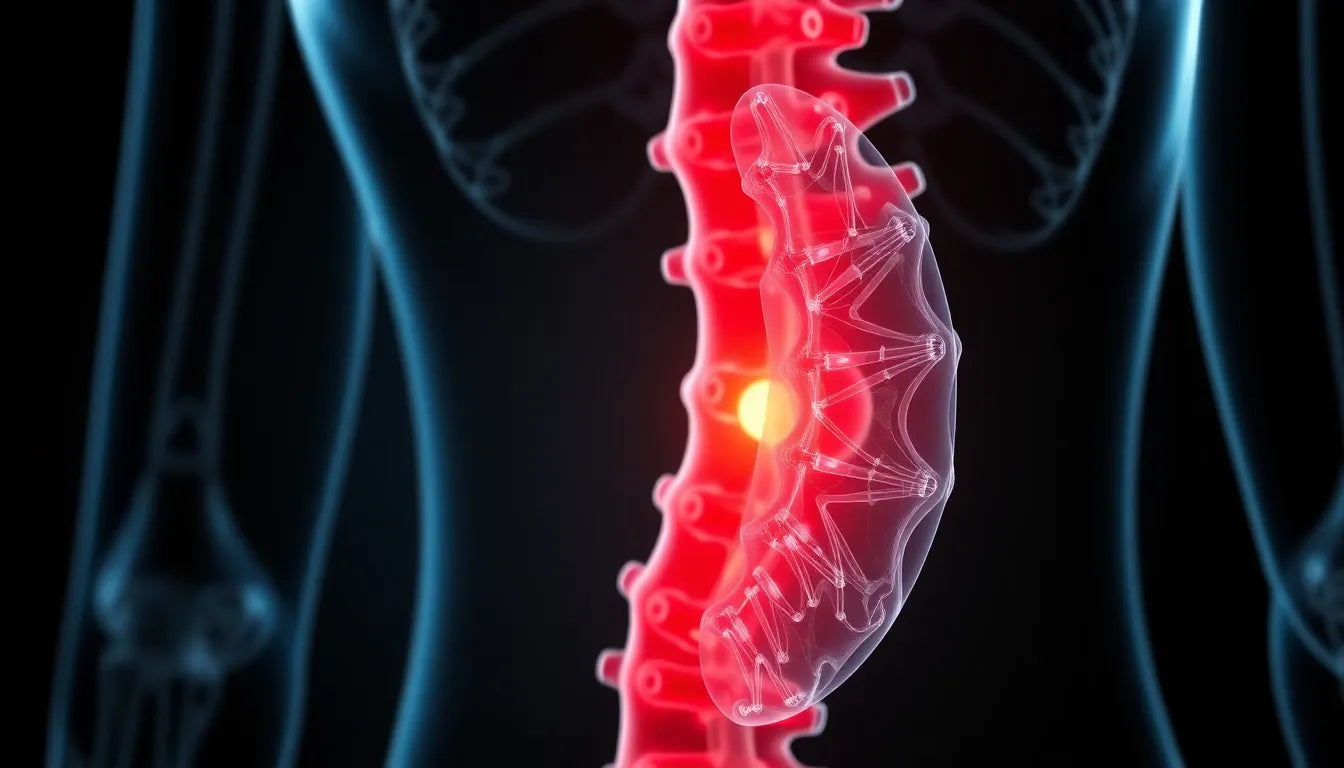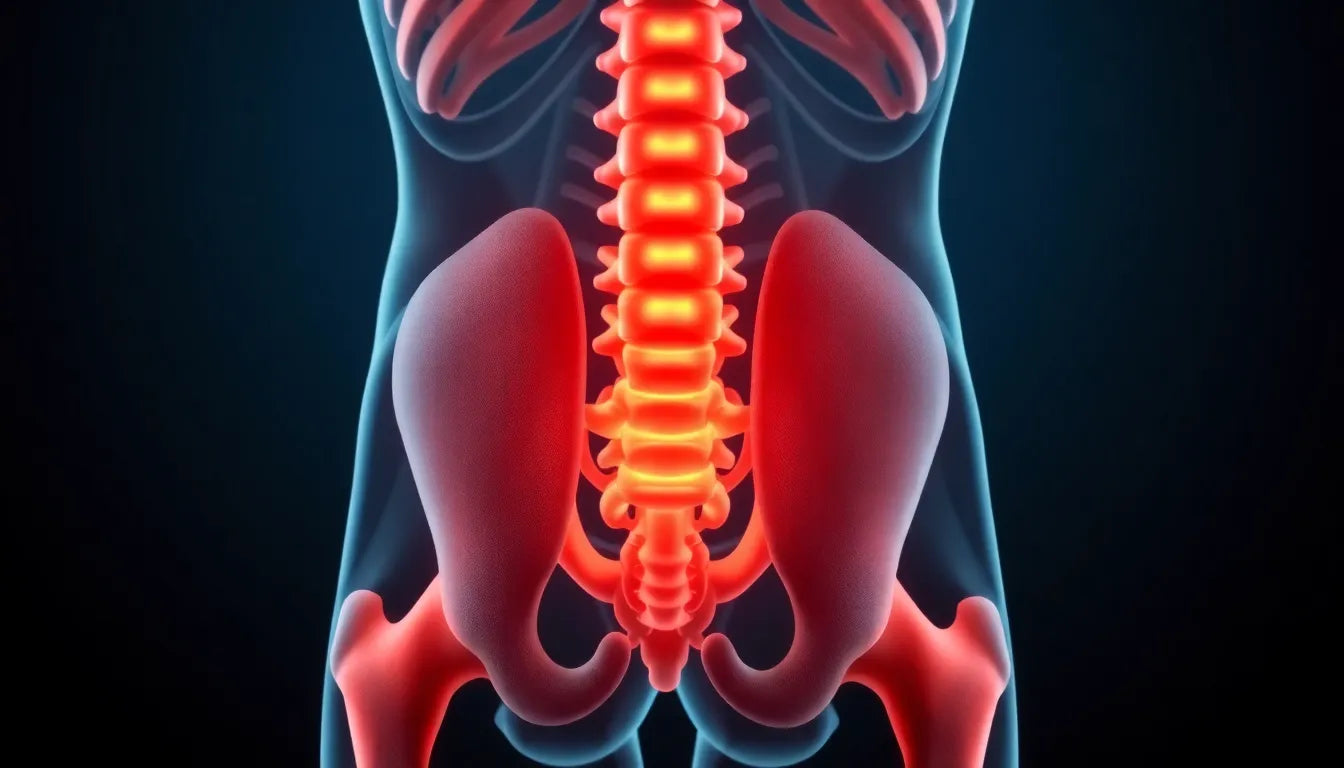Dealing with a herniated disc can be a daunting experience, affecting not just your physical health but your overall quality of life. Understanding what a herniated disc is and how it occurs is the first step toward finding effective relief. A herniated disc, often referred to as a slipped or ruptured disc, happens when the soft inner gel of a spinal disc pushes through a tear in its tougher exterior. This can occur due to injury, age-related wear and tear, or even sudden strain from lifting heavy objects incorrectly.
Common symptoms include back pain, numbness, and tingling sensations that can extend into your limbs. These symptoms can vary in intensity, sometimes leading to severe discomfort and limiting your ability to perform everyday tasks. The impact on daily life can be significant, making it crucial to seek effective methods for managing the pain and discomfort associated with a herniated disc.
The goal of this guide
The purpose of this guide is to provide you with simple and effective solutions for managing herniated disc pain. While surgical options are available, this post emphasizes non-surgical remedies and lifestyle adjustments that can offer significant relief. From physical therapy and targeted exercises to home remedies and medications, we will explore a variety of strategies to help you manage your symptoms and improve your quality of life.
Our focus is particularly on conservative treatments that can be implemented at home or with the guidance of a healthcare professional. These solutions are designed to alleviate pain, enhance mobility, and strengthen the muscles supporting your spine. Additionally, we will discuss when it might be necessary to consider surgical options, ensuring you have a comprehensive understanding of all available treatments.
Whether you're seeking immediate relief or looking for long-term management strategies, this guide aims to empower you with the knowledge to make informed decisions about your health. By exploring a range of options, you can find the best approach to address your specific needs and regain control over your daily life.
conservative treatment options for herniated discs
When it comes to managing a herniated disc, conservative treatment options are often the first line of defense. These approaches focus on alleviating pain, reducing inflammation, and improving function without the need for surgery. One of the most effective methods is physical therapy, which plays a crucial role in strengthening muscles and enhancing flexibility. A well-structured physical therapy program can help stabilize the spine, reduce pressure on the affected disc, and prevent further injury.
physical therapy and exercises
Physical therapy typically involves a combination of targeted exercises and stretches designed to support the spine and alleviate pain. Key exercises include hamstring stretches, which help relieve tension in the lower back, and neck stretches, which can reduce discomfort in the cervical region. Core strengthening exercises are also essential, as they enhance the stability of the spine and reduce the risk of future disc issues.
To ensure proper technique and maximize benefits, consider consulting with a physical therapist who can tailor a program to your specific needs. Below is a simple table illustrating some recommended exercises:
| Exercise | Technique |
|---|---|
| Hamstring Stretch | Lie on your back, lift one leg, and gently pull it towards your chest with a towel. |
| Neck Stretch | Sit upright and slowly tilt your head towards each shoulder, holding for 15-30 seconds. |
| Core Strengthening | Perform planks by holding your body in a straight line from head to heels, supported by your forearms and toes. |
home remedies
In addition to physical therapy, several home remedies can be effective in managing herniated disc pain. Ice and heat therapy are popular methods for reducing inflammation and soothing sore muscles. Applying ice packs can help numb the area and decrease swelling, while heat therapy can relax tight muscles and improve blood flow.
It's important to avoid prolonged bed rest, as this can lead to muscle stiffness and delayed recovery. Instead, aim to maintain gentle activity, such as walking or light stretching, to keep the muscles engaged and promote healing.
medications
Over-the-counter medications, such as nonsteroidal anti-inflammatory drugs (NSAIDs), can provide relief by reducing inflammation and alleviating pain. Common NSAIDs include ibuprofen and naproxen, which are often recommended for short-term use. However, it's essential to be aware of potential side effects, such as gastrointestinal issues, and consult a healthcare provider before starting any medication regimen.
surgical interventions for severe cases
While conservative treatments are effective for many individuals, there are cases where surgical intervention may be necessary. Surgery is typically considered when there is severe pain, significant nerve damage, or when conservative methods fail to provide relief. It's crucial to consult with a healthcare professional to determine the best course of action based on your specific condition.
common surgical procedures
Several surgical options are available for herniated discs, including microdiscectomy and spinal fusion. A microdiscectomy involves removing the portion of the disc that is pressing on the nerve, providing immediate relief from pain and discomfort. Spinal fusion, on the other hand, involves joining two or more vertebrae to stabilize the spine and prevent further issues.
Spinal decompression is another technique that can help reposition the herniated disc and relieve pressure on the nerves, offering significant benefits for patients with persistent symptoms.
post-surgery considerations
Recovery from surgery involves careful rehabilitation and adherence to a surgeon's advice. It's essential to follow a structured rehabilitation program to regain strength, flexibility, and function. This process may include physical therapy, lifestyle adjustments, and ongoing monitoring to ensure a successful recovery.
By understanding both conservative and surgical options, you can make informed decisions about the best approach to address your herniated disc pain and improve your quality of life.
alternative and holistic therapies for herniated disc relief
In addition to conventional treatments, exploring alternative and holistic therapies can provide added relief for individuals suffering from herniated disc pain. These approaches often complement traditional medical treatments and can enhance overall well-being.
chiropractic care and acupuncture
Chiropractic care focuses on spinal alignment and can help alleviate pressure on the nerves caused by a herniated disc. Chiropractors use manual manipulation techniques to improve spinal mobility and reduce discomfort. While some people experience significant relief, it's essential to consult with a healthcare provider to ensure this approach suits your condition.
Acupuncture, an ancient Chinese therapy, involves inserting thin needles into specific points on the body to promote energy flow and reduce pain. Many individuals find acupuncture beneficial for managing chronic pain, including that caused by herniated discs. However, results can vary, and it's crucial to seek treatment from a licensed practitioner.
therapeutic injections
Therapeutic injections, such as epidural steroid injections, can provide temporary relief from inflammation and pain associated with herniated discs. These injections deliver medication directly to the affected area, reducing swelling and alleviating discomfort. While effective, these injections are typically used as part of a broader treatment plan and should be administered under medical supervision.
lifestyle adjustments for long-term relief
Implementing lifestyle changes can play a pivotal role in managing herniated disc pain and preventing future issues. By making ergonomic adjustments and adopting preventative measures, you can support your spine's health and enhance your quality of life.
ergonomic changes
Modifying your workspace and daily habits can significantly reduce strain on the spine. Consider using ergonomic chairs and desks that promote proper posture and reduce pressure on the back. Additionally, incorporate regular breaks and stretches into your routine to alleviate tension and improve circulation.
preventative measures
Regular exercise and weight management are crucial in preventing the recurrence of herniated discs. Engage in low-impact activities such as swimming or walking, which can strengthen the muscles supporting the spine without excessive strain. Maintaining a healthy weight reduces the burden on your back, minimizing the risk of further disc issues.
frequently asked questions
Can a herniated disc heal without surgery?
Yes, many herniated discs can heal naturally over time with conservative treatments. Physical therapy, medications, and lifestyle adjustments can promote healing and alleviate symptoms, reducing the need for surgical intervention.
What activities should be avoided with a herniated disc?
Activities that involve heavy lifting, twisting motions, or high-impact sports should be avoided, as they can exacerbate symptoms. Instead, focus on low-impact exercises and consult a healthcare provider for personalized advice.
How long does it take to recover from a herniated disc?
Recovery time varies depending on the severity of the herniation and the treatment approach. With conservative treatments, many individuals experience improvement within a few weeks to months. Surgical recovery may take longer, depending on the procedure and individual factors.
Are there any risks associated with alternative therapies?
While alternative therapies like chiropractic care and acupuncture are generally safe, they may not be suitable for everyone. It's essential to consult with a healthcare professional to determine the best approach for your specific condition and ensure treatments are performed by qualified practitioners.
By considering a combination of traditional and alternative therapies, making lifestyle adjustments, and consulting with healthcare professionals, you can effectively manage herniated disc pain and improve your overall well-being.
```html
Sources
- Spine-health. "Herniated Disc Treatment Options."
- Mayo Clinic. "Herniated Disk: Diagnosis and Treatment."
- Medical News Today. "What to Know About Herniated Discs."
- OrthoInfo. "Herniated Disk in the Lower Back."
- Northeast Spine and Sports Medicine. "Spinal Decompression for Herniated Discs."
- Sciatica.com. "Herniated Disc Treatment Options."


















